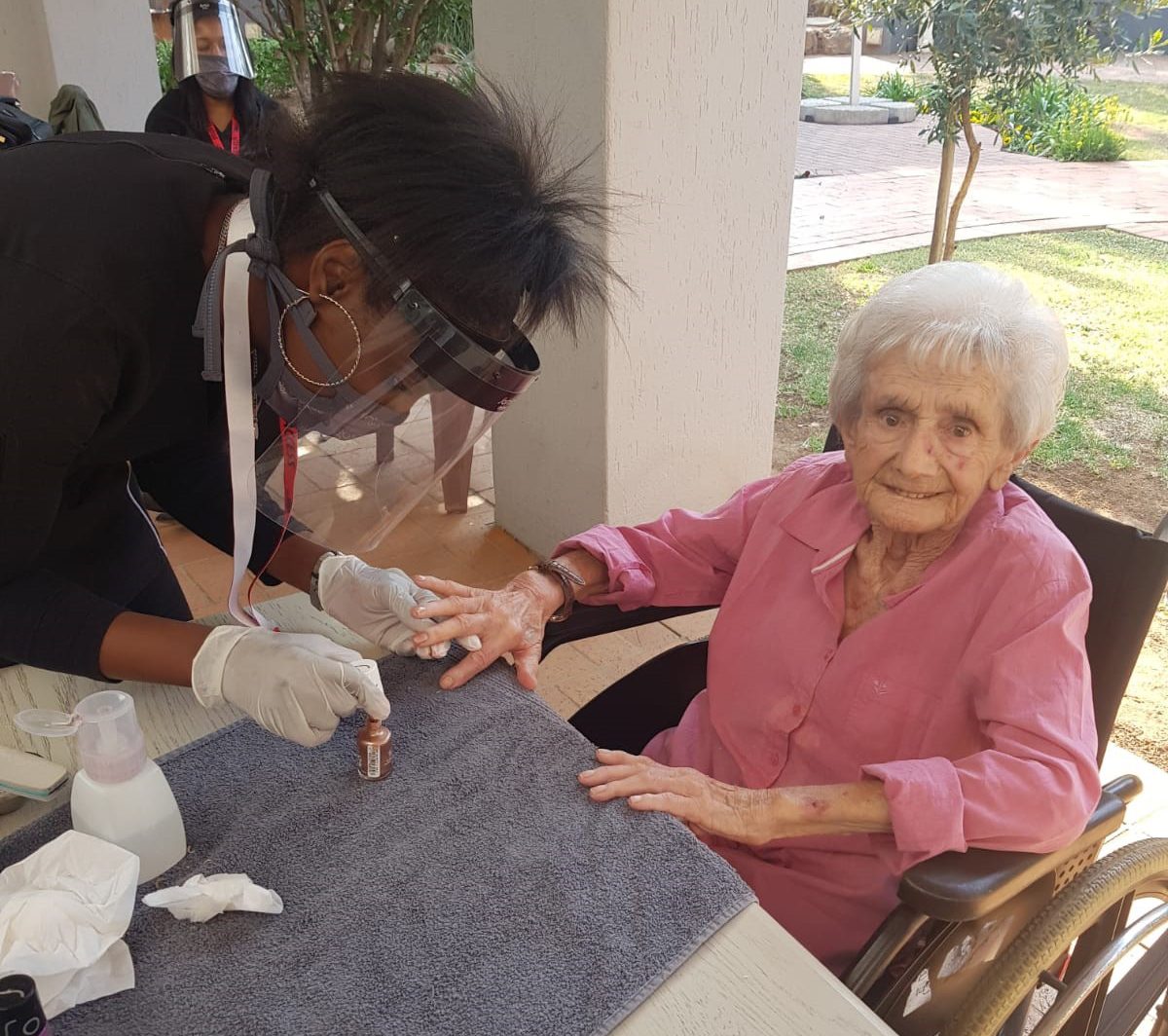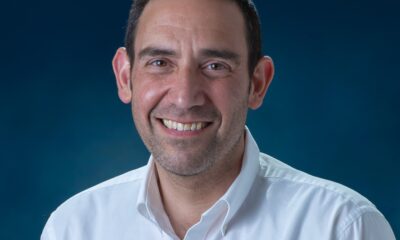
Banner

COVID-19 deaths in decline, but community still on alert
The Jewish community in Johannesburg has experienced a dramatic drop in COVID-19 deaths since the surge in July. “So far in September, we have only had two COVID-19 deaths in Johannesburg, and we are seeing no excess deaths compared to the past five years,” says Chevrah Kadisha (The Chev) Chief Executive Saul Tomson.
“The reported sharp drop in deaths due to COVID-19 in the Jewish community is indeed good news,” says Barry Schoub, the founder of the National Institute for Communicable Diseases (NICD) and professor emeritus of virology at the University of the Witwatersrand.
“It parallels the positive trends indicating that the current COVID-19 epidemic is declining [in South Africa]. So, for example, the daily increase in cases has dropped markedly from 5.37 during lockdown level 5, to 0.11 at present in lockdown level 1.
“In the general population, the daily mortality rate has similarly dropped steeply from a high of 572 on 22 July, down to 114 on 1 September, and now 39 on 21 September, according to the COVID-19 South Africa dashboard,” says Schoub.
At the peak of the pandemic in South Africa, the South African Jewish community had one of the highest COVID-19 death rates in the world, possibly due to our ageing community. “In July, there were sadly 48 COVID-19 deaths in the Johannesburg Jewish community, and total deaths for July were 110 which is a 129% increase compared to the five-year average,” says Tomson. “In August, there were 17 COVID-19 deaths in the Johannesburg Jewish community, and a 24% increase in the five-year average for the month.”
In the past five weeks, Chevrah Kadisha residential facilities (Sandringham Gardens, Our Parents Home, Selwyn Segal, Arcadia, Sandringham Lodge, and Sandringham Square) have had no new COVID-19 infections among their nearly 1 000 residents.
Tomson says these homes are all still under strict lockdown. “We were cautious prior to the national lockdown, and now we need to remain increasingly vigilant as the national lockdown eases. The pandemic is very much ongoing, and the elderly are still very vulnerable. There is, understandably, mounting pressure from families wanting to visit and residents wanting to get out, but essentially the risk profile hasn’t changed. All the good work we have done means that the vast majority of residents haven’t contracted it, and we want to keep it that way.”
Indeed, Schoub warns, “Acute viral epidemics follow a broadly similar pattern – the epidemic curve rises fairly rapidly to reach a peak, and then falls off again over a short period of time. Importantly, the virus doesn’t disappear and will still be circulating in the population at a low, perhaps even imperceptible level.
“The disappearance of overt cases of disease often leads to complacency and a relaxation of care to prevent infection. The inevitable consequence is the advent of the second and subsequent waves of the disease. In a number of countries, the second wave has been even more severe than the first. Israel is one such country,” says Schoub.
“The important lesson is that while the South African epidemic is certainly easing, 500 to 1 500 daily cases are still being reported,” Schoub says. “Even when it does come down to a few sporadic cases, the price of complacency and relaxation of vigilance is the inevitable return of the epidemic.”
“We are doing our best to normalise life within the facilities, and we have opened the dining rooms as of first-night Rosh Hashanah,” Tomson says. “We also brought in beauty therapists from Sorbet to uplift our residents prior to yom tov.”
The Chev has also started to organise visits on an appointment basis, with strict protocols in place. These are labour intensive and complicated, needing an infection-control monitor on both the resident and guest sides, screening of guests, and ensuring all protocols are adhered to. The Chev is in constant communication with the community, residents, and families, and Tomson emphasises that the organisation is still under a lot of pressure to protect every resident.
In Cape Town, there has been at least one COVID-19 death in September, but “the numbers on the COVID-19 Wellness Monitoring Programme have dropped significantly”, says the director of the Community Security Organisation (CSO), Loren Raize. “In August, we monitored 15 people on the programme, and in September, so far, we have had six join, three of whom are still currently on the programme.”
Delia Kaplan, the deputy director of Cape Town’s Highlands House for the Jewish Aged, says the home had an isolated incident of COVID-19 in which a resident passed away on 28 August. The home is still under lockdown, and residents can’t leave unless for medical reasons. On their return, they isolate for 14 days.
However, many restrictions within the home have been relaxed, and families can visit by appointment under strict protocols. Every visitor, including staff and contractors, has to complete digital symptom screening before entering the premises. The situation is constantly assessed, but “there is a sense of hope and renewal”, she says.
In Durban, one Jewish individual in a COVID-19 ward passed away in September, but COVID-19 wasn’t confirmed as the cause of death. In August, one Jewish person who had COVID-19 passed away, while two were unclear. Beth Shalom Aged Home Chairperson Solly Berchowitz says that one of the previously reported positive cases at the home passed away.
“We are still in lockdown with only essential resident movements. Late last week, we started allowing family to visit residents in the garden under strict conditions,” he says.
In Pretoria, the Jaffa Aged Home had no cases of COVID-19 from 20 July until one resident tested positive in mid-September. She is in isolation. The home is still under lockdown.
“Visitors can come to the fence and speak to a resident from five metres away. Residents cannot leave unless for emergencies. We opened the dining room last week so that the residents could eat a yom tov meal together, but with screens and distance between them. They can also go to the garden. We continually reassess the situation,” says the home’s director, Mark Isaacs.
Experts warn that in spite of the promising numbers, now isn’t the time to let down our guard. “What we do while opening up as a community going forward may have an effect [on increasing infections], and there are many in our community with elevated risk of severe disease if infected with COVID-19,” says Professor Jeffrey Dorfman, extraordinary associate professor in medical virology at Stellenbosch University.
“Some precautions should be near universal. This includes continued wearing of masks in public places, particularly public indoor spaces. As much as I value public shul services, I feel that masks, social distancing, and limits on attendance should probably remain for now. Singing seems to create particular risks, and shul rules need to continue to reflect this. Personally, I have been to public prayers, but only outdoors, with no immediate plans to change that.”
Professor Lucille Blumberg, the deputy director of the NICD, agrees. “COVID-19 is still with us. We are alert for resurgence. The risk groups for severe illness and death remain the same, and these vulnerable groups and their close contacts need to ensure that they continue to be cautious. This applies to gatherings around yom tov. Home gatherings are of concern. While there are protocols in place in synagogues to reduce transmission, at home, people let their guard down, especially among family and friends. Care homes need to continue to take the necessary precautions.”










